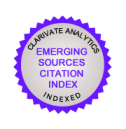Is the concept of a “safe country” safe? An analysis in the light of the jurisprudence of the European Court of Human Rights
DOI:
https://doi.org/10.18042/cepc/rdce.66.09Abstract
The Directive 2013/32/EU contemplates three concepts of safe country. First, the application of the concept of “safe country of origin” allows the Member State to process an application for international protection by a national of that country through an accelerated procedure. Second, the application of the concept of “safe third country” makes it possible for the Member State to reject an application for international protection. And third, the application of the concept of “European safe third” country allows the Member State not to carry out, or at least not to do so completely, the examination of the application for international protection. Some Member States have adopted national lists of safe countries of origin, and even the Commission has proposed that a common European list of safe countries of origin be adopted. In any case, both the legislative, administrative and judicial practice of the Member States, as well as the application of readmission agreements signed by the EU, must comply with Directive 2013/32/EU, the ECHR and the ECHR jurisprudence. The study of the ECHR jurisprudence that interprets and applies Arts. 2 and 3 of the ECHR, demonstrates the need for a complete and ex nunc examination of both the prevailing circumstances in a given State and the specific circumstances of the person subject to expulsion, before proceeding with the expulsion. Otherwise, the establishment of a timeless and depersonalized list of safe countries of origin can come into conflict with the ECtHR jurisprudence. In this regard, the jurisprudence of this Court provides criteria that allow the development of those set out in Directive 2013/32/EU, in order that the classification of a country as safe is based on the effective respect of human rights, one of the values on which the EU is founded.
Downloads
Published
How to Cite
Issue
Section
License
Copyright
Submission of a manuscript to the RDCE implies having read and accepted the journal's editorial guidelines and instructions for authors. When a work is accepted for publication, it is understood that the author grants the RDCE exclusive rights of reproduction, distribution and, where appropriate, sale of his manuscript for exploitation in all countries of the world in printed version, as well as any other magnetic, optical and digital media.
Authors shall transfer the publishing rights of their manuscript to RDCE so that it may be disseminated and capitalised on Intranets, the Internet and any web portals and wireless devices that the publisher may decide, by placing it at the disposal of users so that the latter may consult it online and extract content from it, print it and/or download and save it. These activities must comply with the terms and conditions outlined on the website hosting the work. However, the RDCE authorises authors of papers published in the journal to include a copy of these papers, once published, on their personal websites and/or other open access digital repositories. Copies must include a specific mention of RDCE, citing the year and issue of the journal in which the article was published, and adding a link to the RDCE website(s).
A year after its publication, the works of the RDCE will be under the Creative Commons Attribution-Noncommercial-NoDerivative 4.0 International license (CC BY-NC-ND 4.0), which allows third parties to share the work as long as its author and its first publication is indicated, without the right to commercial exploitation and the elaboration of derivative works.
Plagiarism and scientific fraud
The publication of work that infringes on intellectual property rights is the sole responsibility of the authors, including any conflicts that may occur regarding infringement of copyright. This includes, most importantly, conflicts related to the commission of plagiarism and/or scientific fraud.
Practices constituting scientific plagiarism are as follows:
1. Presenting the work of others as your own.
2. Adopting words or ideas from other authors without due recognition.
3. Not using quotation marks or another distinctive format to distinguish literal quotations.
4. Giving incorrect information about the true source of a citation.
5. The paraphrasing of a source without mentioning the source.
6. Excessive paraphrasing, even if the source is mentioned.
Practices constituting scientific fraud are as follows:
1. Fabrication, falsification or omission of data and plagiarism.
2. Duplicate publication.
3. Conflicts of authorship.
Warning
Any breach of these Rules shall constitute a ground for rejection of the manuscript submitted.









